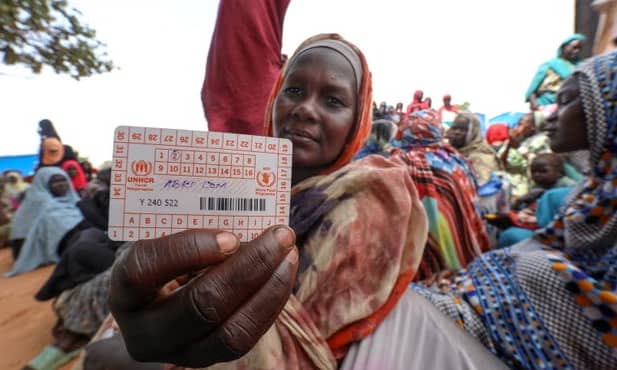At least 5.4 million people have been displaced by the fierce fighting that broke out in the country in April
Peter Beaumont and Zeinab Mohammed Salih in Omdurman
Humanitarian officials say the widening conflict in Sudan has left them trying to “plan for the apocalypse” as aid supply lines are disrupted and more people are displaced both internally and across the country’s borders.
At least 5.4 million people have already been displaced by the fighting that broke out in April between between the Sudanese armed forces, led by Gen Abdel Fattah al-Burhan, and the Rapid Support Forces loyal to his rival Mohamed Hamdan Dagalo – known as Hemedti.
As well as their armed power struggle, which is centred on the capital, Khartoum, communal violence has erupted once again in the Darfur region, where Sudanese Arab groups have targeted the Masalit people.
“We’re essentially witnessing two separate conflicts,” said one aid official who wished to remain anonymous. “The first, which is getting a lot of attention, is between Burhan and Hemedti in Khartoum. The second, which is much more sinister, is what is happening in Darfur.”

The official likened aspects of the situation in Darfur, a huge and largely arid swath of western and south-western Sudan, to the widespread violence and rights abuses that occurred there between 2003 and 2009. “In some places, 70% of the population have fled, mostly Masalit,” the official said. “We are seeing IPC4 levels of malnutrition [the second highest rating].”
The official also expressed fears that fighting between the SAF and RSF would spread south-east from Khartoum to Jazirah state, the country’s bread basket situated between the Blue and While Niles, and that the 1.1 million South Sudanese refugees in White Nile state might decide they have no choice but to return to their own country. “The fear is that if they get spooked they go back to a South Sudan that cannot cope,” the official said. “It’s like trying to plan for the apocalypse.”
Since the outbreak of fighting on 15 April, a series of interlocking conflicts have broken out around the country. “There are more and more militias getting involved,” Tibor Nagy, the former head of the US state department’s Africa bureau in the Donald Trump administration, told Foreign Policy last week. “The humanitarian dimension will also get worse. Pick your calamity.”
Fighting around Khartoum and its twin city of Omdurman has already driven about 2.8 million people from their homes. Last month, almost half of the residents of just one district of Omdurman left after the SAF warned them that their neighbourhood was going to be shelled. Twenty people were subsequently killed in two rounds of shelling, including 10 who died while watching a football match.
Aisha Ibrahim, 56, sent three of her seven children to Sawakin City in the east of the country, while she, her husband and another child escaped to another part of Omdurman that is under army control.

“I can’t afford to travel with whole my family to eastern Sudan,” she said. “We are divided now. For the first time in my life I got separated from my little children, but for their safety I would do anything.”
Ibrahim and her family took only clothes from the house, leaving behind furniture and other possessions. “You can’t carry anything or you will get looted in the streets by the army or by the RSF,” she said. “They are all looters.”
Intensified fighting in recent weeks has exacerbated shortages of food in neighbourhoods on the frontlines. The market in Ibrahim’s neighbourhood was selling only potatoes and meat before she left. It closed at 10am because of the risk of the shelling.
Zeinab Musa fled from the same district to Shendi City in River Nile state following an increase in shelling. “We never thought that the war would reach our area, but it is hopeless” she said. Musa said she was staying with relatives for free for now but at some point would need to find her own accommodation. Like others, she faces rapidly increasing rental prices in safer areas, driven by the displacement crisis.
On Tuesday, the World Food Programme issued an alert warning of a looming hunger emergency on the border between Sudan and South Sudan.
Data gathered by WFP shows that among the nearly 300,000 people who have arrived in South Sudan in the last five months, one in five children are malnourished and 90% of families say they are going days without eating.
Almost all of those who have crossed the border since fighting broke out in Sudan in mid-April are South Sudanese. They are returning to a country already facing unprecedented humanitarian needs.
“We are seeing families leave one disaster for another as they flee danger in Sudan only to find despair in South Sudan,” said Mary-Ellen McGroarty, WFP’s country director in South Sudan. “The humanitarian situation for returnees is unacceptable and WFP is struggling to meet the mounting humanitarian needs at the border. We simply do not have the resources to provide life-saving assistance to those who need it most.”
